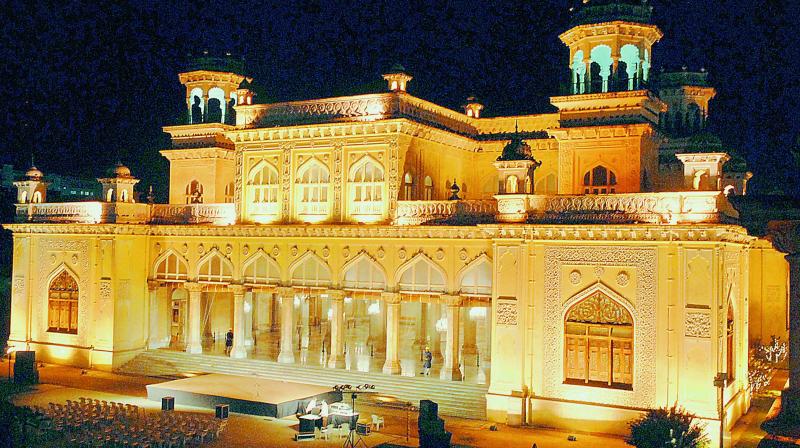
Hyderabad: It has been a while since Chowmahalla Palace opened its gates for a concert. On Saturday evening, ‘Ranjish-e-sahi’ rang out of its Durbar-e-Aam, perhaps a symbolic call to the palace itself.
The stage stood right in front of the durbar, facing the Takht-e-Nishan where the Nizams once held court, and became a confluence of history and culture with ghazal, dhurpad and Kathak,from across the country.
“When we sing here, we imagine those days when mehfils were held in such spaces, when kings sat on their thrones and music filled the darbar. We haven’t seen that time, but being here, singing here, it feels like going back,” said Pandit Umakant Gundecha of the renowned Gundecha Brothers, moments before beginning their dhrupad recital in Raga Charukeshi.
Each artist responded to the architecture not as a backdrop, but as part of the dialogue. “Our tradition is historic. This space is historic. It felt like history standing in front of history,” said Pandit Rajendra Gangani. As a senior Kathak dancer of the Jaipur gharana, Gangani noted how the architecture had been designed with purpose. “This wasn’t built for decoration. It was imagined by people who understood proportion, design, sound.”
The concert took place between Ashtami and Sri Rama Navami. It briefly paused as the azaan sounded across the Old City, an unannounced moment that said so much about the event — beneath the Nizam’s architecture, a subtle celebration of Sri Rama Navami, art forms that are a confluence of temples, courts and mehfils.
“When we dance, we respect every viewer’s belief. The art doesn’t erase difference. It honours it,” said Pandit Gangani.
Each artist, in their own way, acknowledged the occasion. The Gundecha brothers sang a stuti in Raga Durga and closed with a composition on Shiva.
Gangani, during his earlier workshop, taught a Durga paran. “We organised the students into two groups. One group worked on a footwork sequence using the number eight for Ashtami. The other explored expressions of Shakti,” he said. The artists organised these workshops on Saturday morning and will have another one on Sunday.
The dhrupad session, led by the Gundecha Brothers, invited students to engage with theory and practice, understanding taal, bandish and the philosophy of naad. “This is not a performance form. It is prayer, meditation, and attention,” said Pandit Umakant Gundecha. “You do not need to understand it. You only need to listen. As you would listen to a flute or a bhajan.”
Jyothi Sharma, the only artist from Hyderabad, and the youngest, performed ghazals, the most popular one being ‘Ranjish-e-Sahi’. A song that asks for return even through pain, it opened the evening and by the end, it felt as if the palace itself was making the same request — come back, even if just to remember.

